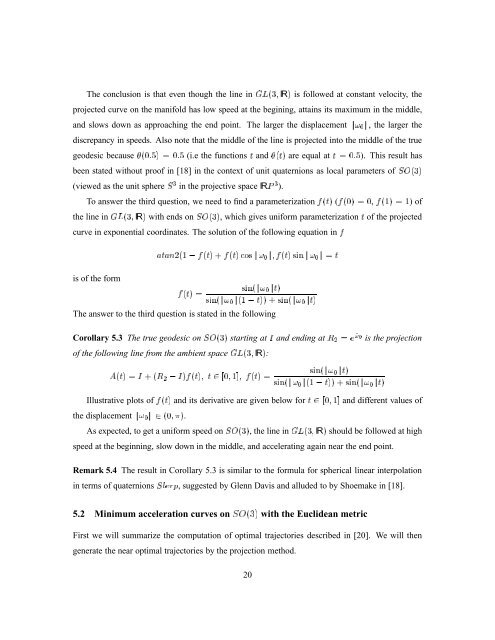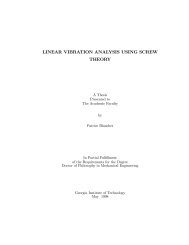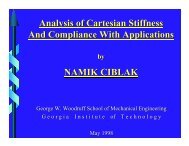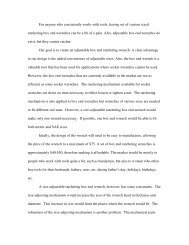New metrics for rigid body motion interpolation - helix
New metrics for rigid body motion interpolation - helix
New metrics for rigid body motion interpolation - helix
You also want an ePaper? Increase the reach of your titles
YUMPU automatically turns print PDFs into web optimized ePapers that Google loves.
The conclusion is that even though the line in GL(3; IR) is followed at constant velocity, the<br />
projected curve on the manifold has low speed at the begining, attains its maximum in the middle,<br />
and slows down as approaching the end point. The larger the displacement k! 0 k, the larger the<br />
discrepancy in speeds. Also note that the middle of the line is projected into the middle of the true<br />
geodesic because (0:5) = 0:5 (i.e the functions t and (t) are equal at t = 0:5). This result has<br />
been stated without proof in [18] in the context of unit quaternions as local parameters of SO(3)<br />
(viewed as the unit sphere S 3 in the projective space IRP 3 ).<br />
To answer the third question, we need to find a parameterization f (t) (f (0) = 0, f (1)=1)of<br />
the line in GL(3; IR) with ends on SO(3), which gives uni<strong>for</strong>m parameterization t of the projected<br />
curve in exponential coordinates. The solution of the following equation in f<br />
atan2(1 , f (t) +f (t) cos k! 0 k;f(t) sin k! 0 k = t<br />
is of the <strong>for</strong>m<br />
sin(k! 0 kt)<br />
f (t) =<br />
sin(k! 0 k(1 , t)) + sin(k! 0 kt)<br />
The answer to the third question is stated in the following<br />
Corollary 5.3 The true geodesic on SO(3) starting at I and ending at R 2 = e^! 0<br />
is the projection<br />
of the following line from the ambient space GL(3; IR):<br />
A(t) =I +(R 2 , I)f (t); t 2 [0; 1]; f (t) =<br />
sin(k! 0 kt)<br />
sin(k! 0 k(1 , t)) + sin(k! 0 kt)<br />
Illustrative plots of f (t) and its derivative are given below <strong>for</strong> t 2 [0; 1] and different values of<br />
the displacement k! 0 k2(0;).<br />
As expected, to get a uni<strong>for</strong>m speed on SO(3), the line in GL(3; IR) should be followed at high<br />
speed at the beginning, slow down in the middle, and accelerating again near the end point.<br />
Remark 5.4 The result in Corollary 5.3 is similar to the <strong>for</strong>mula <strong>for</strong> spherical linear <strong>interpolation</strong><br />
in terms of quaternions Slerp, suggested by Glenn Davis and alluded to by Shoemake in [18].<br />
5.2 Minimum acceleration curves on SO(3) with the Euclidean metric<br />
First we will summarize the computation of optimal trajectories described in [20]. We will then<br />
generate the near optimal trajectories by the projection method.<br />
20













